You’ll Need Bigger Clothes If You Follow the Government’s Advice
The United States Department of Agriculture (USDA) launched their Dietary Guidelines for Americans, 2010 with great fanfare. Mostly, the Guidelines are more of the same wimpy advice that has been making Americans fatter and sicker for the last several decades.
The 2010 Guidelines does have a new twist, though. The USDA makes a half-hearted effort to lay out a 100% plant-based eating plan. Appendix 9 of the Guidelines is labeled “Vegan Adaptation of the USDA Food Patterns.”
What a silly task, to “adapt” plant-based eating to a framework built on animal foods that create obesity and disease. This is like writing Shakespeare by revising the script for a boring TV sitcom. Here are eleven of the most hazardous errors the USDA makes in the process, starting at the top of Appendix 9 for the 2,000 calorie a day diet, and working through to the bottom.
1. Severely limiting fruit. Fruit combines super nutrient density with enough calories to make a big dent in your appetite. Study after
study consistently shows the unending health benefits of fruit, and this food also facilitates weight loss. On a whole foods, plant-based diet, there is absolutely no need to artificially limit the quantity of fruit eaten.
2. Severely limiting vegetables. The Guidelines specify eleven cups of dark green, red, orange, and “other” vegetables (combined) a week, or about one and a half cups a day. This is not a generous amount. Vegetables are the food with the highest nutrient density per calorie. People should be encouraged to eat as many vegetables as they want. “Other” vegetables are not defined, but would presumably be foods like cauliflower, celery, green peppers, onions, and zucchini.
3. Counting beans and peas (legumes) as a vegetable. Legumes have quite a different caloric density and nutrition profile than true vegetables (such as broccoli, spinach, and carrots) do. For planning an optimal vegan diet, legumes should be thought of as a different category of food. In fact, legumes are listed a second time in Appendix 9 under “protein foods.” Under vegetables, consumers are told to eat one and a half cups of legumes a week, and under “protein foods” admonished to eat another 13 ounces a week. Is the USDA trying to sow confusion, or is it just that they can’t write? Why list with cups in one spot and ounces a few lines down? Clearly not much thought was put into figuring out how to maximize the health-promoting benefits of legumes or defining their fundamental role in a vegan diet.
4. Recommending that people eat the same amount of refined grains as they do of whole grains. While whole grains promote health,
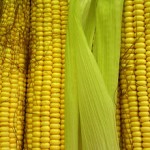
Corn is an excellent whole grain. Eat it on the cob, as whole kernels of corn, or as whole corn meal - not refined corn meal.
refined grains are manufactured (and high profit margin) foods that contribute to diabetes, heart disease, obesity, and numerous other chronic illnesses that are killing Americans and bankrupting the country. Yes, people do eat refined grains, that is reality. People also smoke and use drugs. Just because a behavior exists is no reason to encourage it in Guidelines that should be focused on optimal outcomes.
5. Putting “protein foods” in a separate category, as if only certain foods contain sufficient protein. In fact, all living beings – plant and animal – are built with proteins that are linked assemblies of the exact same twenty amino acids. Only plants can make essential amino acids, the ones that you need to get from your food. You don’t need a specially identified source of protein in your food any more than you need a specially identified source of oxygen in your air. Get your protein from whole plant foods. It’s almost impossible to be deficient if you eat sufficient calories to satisfy your hunger. By putting “protein foods” in a separate class, the USDA is encouraging the false mindset that protein is a rare nutrient, and implicitly encouraging people to eat too much protein in a bid to make sure they get enough. Excess protein can harm your liver and kidneys, spark chronic inflammation, and raise levels of the growth factor IGF-1 that fuels cancer.
6. Recommending “soy products” without defining which soy foods are healthy. The Guidelines recommend “soy products” as a “protein food.” Whole soy foods, which include edamame, tofu, soy nuts, tempeh, soy milk, and soy yogurt, are healthy in moderate amounts. Highly processed mock meats, protein powders, energy bars, and other manufactured foods made from isolated soy protein are no better than any other salty, highly processed food. By failing to differentiate, the Guidelines encourage vegans to feel good about manufactured foods. This opens the door for those who oppose plant-based eating to accuse vegans of living on junk foods.
7. Recommending that people eat almost a pound of nuts a week. Raw and dry roasted nuts are a whole food. Numerous studies have found that people who eat moderate amounts of nuts enjoy health benefits and don’t gain weight. However a pound of this calorie-dense food every week is probably too much and will lead to weight gain. This can disillusion people and lead to them abandoning a plant-based diet. Four to eight ounces of nuts a week would be a better amount for most people.
8. Calling for unreal amounts of dairy-free milks. OK, dairy-free is a huge step forward over cows’ milk, so let’s give the USDA credit for that. However, the recommended three cups of dairy-free milk a day is way in excess of what you should consume, especially if you are concerned about your weight. Liquid calories lead to weight gain, not to appetite satisfaction. You should eat your calories, not drink them. It’s fine to pour a bit of dairy-free milk over morning cereal or use it in soups or baking. The Guidelines include this excessive milk because of inflated fears about not getting enough calcium. Green vegetables are dense with calcium and thousands of other nutrients, so well-crafted dietary recommendations would include a lot more green leafy choices and a lot less milk than the USDA does. It’s virtually impossible to be calcium deficient on a diverse, whole foods, plant-based diet.
9. Advising people to consume 1,110 calories a week from oil. Here’s how it adds up. The Guidelines include 18 grams a day of processed oils. A bit of research shows this to be a bit over a tablespoon. Over the course of a week, this equates to about 1,110 calories from oil, or about 57,720 calories annually. This translates to about sixteen and a half pounds gained a year from oil, since your body has a propensity to take processed oil directly from foods and deposit it in your fat cells. This dietary oil is harmful and unnecessary. Oil is deficient in every nutrient compared to the whole plants it is processed from and has no fiber to help satisfy your appetite. Liquid oil is a highly processed food, with more potential to cause inflammation and weight gain than sugar does.
10. Specifying portion sizes at all. The Guidelines are built around “portion sizes.” These are amounts of food that researchers, most
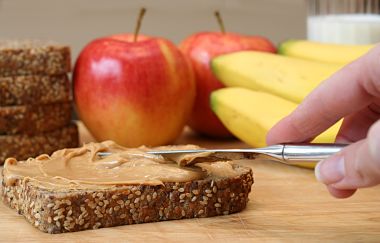
You can trust your naturally perfect body on a whole foods, plant-based diet. You have intricate sensors for both calories and nutrients. Your appetite will tell you how much to eat, not the government or food industry.
often working for or under the influence of corporate food manufacturers and industry groups, decide are optimal. Instead of relying on biased and incomplete research, try trusting your own body, which has innate knowledge of how much you should be eating and when. How did humans survive for millennia before industry scientists started dictating dietary recommendations? Eat a variety of whole plant foods when you are hungry, and stop when you are full. You will likely lose weight if you need to, and your health and vitality will blossom. Artificial portion sizes often force you to stop eating when you are still famished. You may be able to fight your appetite for a short time, but eventually you will give in to your survival instinct and gorge on food – often the most unhealthy choices. Thus portion sizes pave the way for obesity, guilt about amounts eaten, poor self-image, and chronic illness.
11. Not making a plant-based eating plan the default, go-to diet. Page 45 of the Guidelines touts the benefits of meat-free diets. To quote: “In prospective studies of adults, compared to non-vegetarian eating patterns, vegetarian-style eating patterns have been associated with improved health outcomes—lower levels of obesity, a reduced risk of cardiovascular disease, and lower total mortality. Several clinical trials have documented that vegetarian eating patterns lower blood pressure.” Strangely, even with this rousing conclusion, the vegetarian and vegan eating plans are in the Guidelines as an afterthought, with the main recommendations including meat as a fundamental food. Who put these Guidelines together? Taken as a whole, it’s like a box of puzzle pieces with bits from so many puzzles that it’s impossible to put together a coherent picture if you remain within the Guidelines. In fact, you need to venture out to unbiased nutrition studies to figure out whole-foods 100% plant-based eating is the way to go.
Intrigued? Now you can use our Whole Foods Blog Finder to target informative, fun postings on plant-based nutrition. Quick information at no cost!
Blog posting by Janice Stanger, Ph.D. Janice authored The Perfect Formula Diet, the smart person’s nutrition book built on sustainable food choices. Enjoy six kinds of whole foods for permanent, hunger-free weight loss and health.
Tags: 2010, Dietary Guidelines for Americans, getting healthy, inflammation, Plant-based nutrition, reverse chronic disease, USDA, vegan, vegetables, weight loss, whole foods
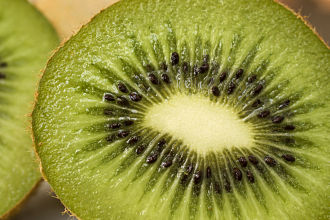

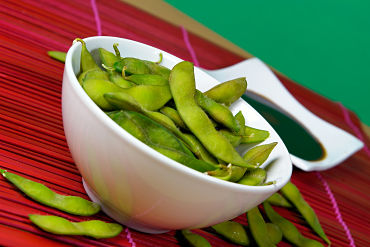
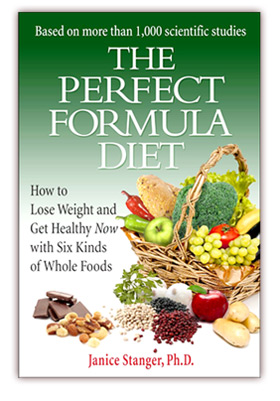




Wow! Thanks for your great overview, Janice! It’s hard to believe that they can be soooo stupid! I guess we should just be happy that they mentioned plant-based diets at all — baby steps! All that oil! Ugh! Recommending processed grains! Double ugh!!! Let’s use the KISS principle! http://pcrm.org/health/powerplate/
I hear your frustration! Fortunatly more people seem to be searching out their own answers since the advice and meds from their Doctors is always not giving good results. I’m glad the words vegan and plant based are being used at least, let’s add unprocessed. I love PCRMs Power plate, I’ve never counted calories but this gives me a good guide for a balanced day. How little fruit do they say to eat?
PCRM leaves the amount of fruit pretty much open. They are eclectic. If you are eating whole plant foods, PCRM is happy.
Great, thought-provoking article! I agree that fruits and vegetables are severely limited and also wonder why refined grains would be recommended at all!